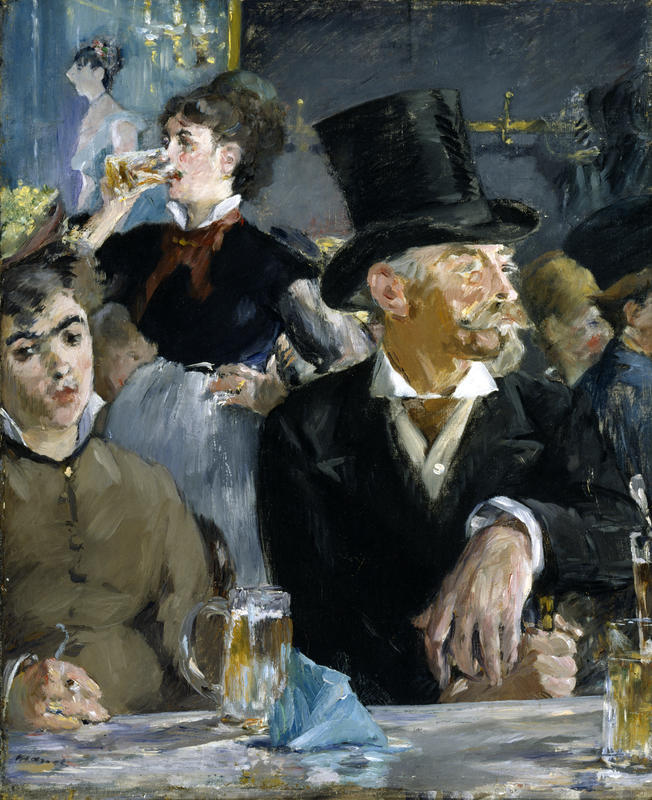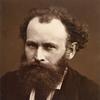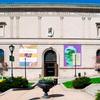More about The Café-Concert

Contributor
Edouard Manet shows us why, in 1879, entertainment came from the cafes of Paris
Coming from a family of diplomats and lawyers, Manet chose an artistic career. By the end of his life he would gravitate towards the rock and roll bar scenes to paint. Manet developed an interest in the cafés of Parisian society: the randomness, the beauty, and the social dynamics of 19th century Paris. The Café-Concert was one in a series of paintings on French society Manet painted near the end of his life.
The Café-Concert shows us the conflicting social classes of Paris. Cafés were the place to be for “modern” mingling and conversation. In one establishment both men and women, and poor and rich would be seen talking to one another (perhaps a bit drunk) and enjoying the same entertainment. Edouard Manet captured this intermingling in The Café-Concert.
The paintings superstars are captured up close and personal. First, we have our lady to the left, who is looking oh-so-overjoyed to be sitting at the bar. Her depleted disposition reveals a grueling life of someone of the lower classes. Our lady has just plopped down on the seat, you can tell from the newly lit cigarette and the pint she hasn’t yet taken a swig of. Her face says, “Look here, buddy, I’m tired, it’s been a rough day, so why don’t you just go and leave me alone.”
It might not be unusual to our eyes, but the woman is attending the bar alone. Back then, and even these days, women unaccompanied in bars would risk getting hit on by eager dudes. But this is no ordinary woman. This working-class woman is identified as a liberated woman, hear her roar! She is a woman living by the modern code of behavior: “I’ll do whatever I want, wherever I want, thank you very much." This modern-day trailblazer can be identified by the cigarette in her hand, which is not something you’d see anyone with a top hat smoking. Only cigars for the bourgeoisie, you see, never a cigarette.
This Café-concert had stages for the night’s entertainment. The performers would be singers, acrobats, comedians, and musical groups. The entertainer tonight is a singer, whom Manet dedicates a small part of his canvas to. While this woman sung her tune, barmen and barmaids passed along beers and spirits for a higher price than usual. You gotta pay for entertainment! If the drinks remained at the usual price, then there’d be an entry fee or seat charge.
The bourgeois gentleman sitting to the woman’s right is watching the singer, whose reflection is in the mirror. Even the staff of the night can’t help but stop for a break - in the foreground, the waitress quickly downs a beer.
Sources
- Callahan, Maura, “On the spectators in Manet’s ‘The Café-Concert’ and art openings as gatherings for the sake of gathering,” The Baltimore Sun, March 20, 2015. Accessed 21 November 2019. https://www.baltimoresun.com/citypaper/bcp-on-the-spectators-in-mane
- Farago, Jason, “Manet’s Last Years: A Radical Embrace of Beauty,” The New York Times, August 1, 2019. Accessed 21 November 2019. https://www.nytimes.com/2019/08/01/arts/design/manet-modern-beauty-revi…
- Ken, Stephen, Eyes of Love: The Gaze in English and French Paintings and Novels, 1840-1900, London: Reaktion Books, 1996.
- Miranda, Carolina A., “Datbook: Architect R.M. Schindler’s historic WeHo home as seen through the female gaze,” Los Angeles Times, October 10, 2019. Accessed 21 November 2019. https://www.latimes.com/entertainment-arts/story/2019-10-10/datebook-ar…-
- Herbert, Robert L., Impressionism: Art, Leisure, and Parisian Society, Yale University, 1988.
- McPhee, Peter, “Friday essay: When Manet met Degas,” The Conversation, June 24, 2016. Accessed November 30, 2019. https://theconversation.com/friday-essay-when-manet-met-degas-61081
- Schwartz, Lloyd, “‘Chez Tortoni,’ by Edouard Manet,” WBUR, September 15, 2018. Accessed November 29, 2019. https://www.wbur.org/lastseen/2018/09/15/chez-tortoni
Featured Content
Here is what Wikipedia says about The Café-Concert
The Café-Concert is an 1879 painting by the French painter Édouard Manet, who often captured café scenes depicting social life at the end of the nineteenth century similar to those depicted in this painting.
Check out the full Wikipedia article about The Café-Concert












